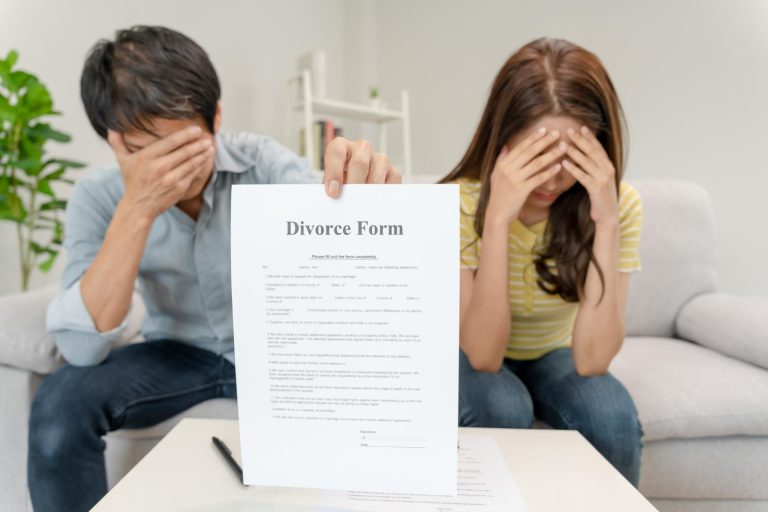As an experienced divorce lawyer at MenduniMartindill, I’ve seen firsthand how the divorce rate in Texas impacts families. Wondering just how prevalent divorce is in the Lone Star State? Our latest findings might surprise you. Stay with me to uncover the current trends, common causes, and what this means for you and your loved ones.
As indicated in the Texas Department of State Health Services, the current divorce rate in Texas is 6.7 per 1,000 residents. This rate reflects data from 2021.
What is the Current Divorce Rate in Texas?
Texas currently has a divorce rate of about 2.6 per 1,000 people.
In Texas, about 2.6 out of every 1,000 people get divorced. This can happen for many reasons, like age, income, education, and cultural beliefs. Usually, younger people, those with less education, and those with lower incomes have higher divorce rates. Other things, like changing views on divorce and access to legal help, also play a role.
Texas has a slightly lower divorce rate than the national average of 3.2 per 1,000 people. It’s important to remember that divorce rates don’t tell the whole story about how healthy marriages are. They just show how many people in Texas have decided to end their marriages for various reasons.
Factors Affecting Divorce Rates in Texas
Texas has one of the highest divorce rates, influenced by factors like economic stress, young marriage age, and lack of premarital counseling.
One big reason people stay or split up in Texas is the state’s economy. When the economy is good, people might stay in unhappy marriages because they feel financially stable. But when the economy is bad, money problems might push them to separate.
Education also matters. Research shows that people who are more educated tend to divorce less often. This might be because educated people have better communication and problem-solving skills, or they understand the impact of divorce more.
Cultural and religious beliefs are important too. You know, in some religious groups, marriage is very sacred, so divorces are less common. In more secular or less religious communities, divorces might happen more as views on marriage change.
Lastly, the availability of legal help and information about divorce can affect divorce rates. Sometimes, people don’t know their rights or how to handle the legal process, which can make them separate instead of getting a divorce.
To sum up, many things can influence divorce rates in Texas, including the economy, education, cultural and religious beliefs, and access to legal information and help.
Divorce Statistics in Texas by Year
In Texas, divorce rates spiked after major economic events but saw a decline with improved economic conditions.
Divorces in Texas were highest just after the year 2000, reaching a peak around the middle of that decade. Since then, the number of divorces has mostly gone down, though there have been some small ups and downs.
Even with the decline, there are still thousands of divorces happening in Texas each year. The reasons for these changes in divorce rates are complicated and could be due to shifts in social norms, the economy, and laws. All in all, divorce remains a common part of life in Texas, affecting many families annually.
How Texas Divorce Rate Compares Nationally
Texas has a divorce rate that’s just above the national average.
Divorce happens a bit more often in Texas than in the rest of the country. In Texas, there are about 3.2 divorces for every 1,000 people, while the national average is around 3.1 per 1,000.
There are several reasons why Texas might have a higher divorce rate. First, Texas is a big state with a lot of people, so more marriages could mean more divorces. Also, Texas has a mix of different cultures and beliefs, which might affect the divorce rate.
It’s important to remember that many things can influence divorce rates, like age, education, income, and religious views. These factors can change how likely it is for people to get divorced.

Impact of COVID-19 on Texas Divorce Rates
The COVID-19 pandemic has significantly spiked divorce rates in Texas.
The stress and uncertainty from the pandemic have made couples fight more, leading to more divorces. Spending more time together has also made existing problems worse. Money problems from job losses and the bad economy have added to the rise in divorces in Texas.
Court closures and limited legal services have caused delays in the divorce process.
My Concluding Thoughts
The current divorce rate in Texas remains high, with statistics showing that approximately 2.7 out of every 1,000 Texans get divorced.
What MenduniMartindill is recommending to go ahead with is, this data highlights the ongoing prevalence of divorce in the state and the importance of seeking support and resources for those going through the process.
Related Articles
- Divorce Services in Fort Bend County – Discover simple and cost-effective divorce solutions tailored for couples in Fort Bend County.
- Clark County Divorce Assistance – Find out how to navigate the divorce process efficiently in Clark County.
- Divorce Help in King County – Learn how to complete your divorce quickly and affordably in King County.






